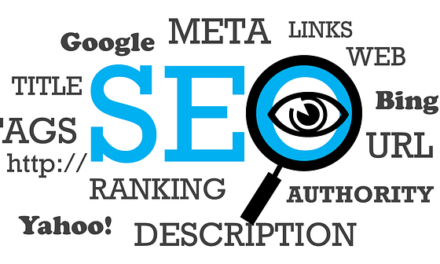Are you making these SEO mistakes? Listed below are SEO mistakes that many webmaster still deploy today. It’s why some domains that are more than 4 years old have no keyword relevance and a low Google Pagerank.
Splash Page
You need to serve up your homepage and avoid this old design flaw. I’ve seen this mistake many times where people put up just a big banner image and a link “Clíck here to enter” on their homepage.
This is fine if you don’t care about what a search engine knows about your site; otherwise, you’re making a BIG mistake. Your homepage is probably your website’s highest ranking page and gets crawled frequently by web spiders.
Lose the Flash and Ajax
If you’re looking to improve SEO, than lose the flash for navigation menus or other elements on your website. Flash can’t be seen by the search engines; and thus the links in the Flash menu will not be followed. Flash looks cool, but not when it comes to SEO. Ajax is another unfriendly SEO technology. Why is this a mistake? Because, ajax content is loaded dynamically, so it is not spiderable or indexable by search engines.
“Click Here” or “Read More” Link Anchor Text
I make this mistake a lot, but on purpose, well at least I admit it. Many people use “Clíck here” or “Learn more” as the linking text. This is great if you want to be ranked high for “Click Here”. But, if you want to tell the search engine that your page is important for a topic, then use, that topic/keyword in your link anchor text. It’s much more descriptive (and relevant) to say “learn more about {keyword topic}”
Exceeding the 65 Character Limit
Many bloggers write very long post titles. This is an issue in search engine result pages, your title tag is used as the link heading. You have about 65 characters (including spaces) to get your message across or risk it getting cut off.
Empty Image Alt Attribute
You should always provide a description (Keep it short) for your images using the alt attribute. Search engines can’t see images so your alt attribute is a factor in illustrating what your page is relevant for.
Tip: Describing your images correctly can improve your ranking in the image search results.
Unfriendly URLs
Most blog platforms have a friendly URL feature built-in (Permalinks), but not every blog owner is taking advantage of this. Friendly URL’s are good for both your visitors and the search engines. It describes what the article is about just from the friendly URL. Do not forget to add your keywords in the URL.
Example:
Friendly URL – https://www.techjaws.com/google-pagerank-update-comes-early/
Non-Friendly URL – https://www.techjaws.com/?p=12356
If you’re using WordPress, go to your wp-admin console and click on the Permalinks. Select Custom Structure and enter the following: /%postname%/.
You should now have friendly URLs.
If you have other SEO mistakes you would like to share, please leave a comment here.




I have the read more anchors on my homepage, and it does affect keyword density there. I haven’t figured out how to change them to include the title yet, but I will get back to working on that. These are great tips on what to avoid in SEO.
~ Kristi
Kristi,
Thank you! I know your blog is doing well. I have checked the source more than once.
hi,
thanks for listing these. i think i dont make these mistakes.
however, the contact form i use in my blog is ajax (i think). will it harm my blog’s pr?
peace and best wishes
irtiza104
The Ajax comment form will not hurt your ranking. It’s important to know where to use Ajax and where not to.
Thanks for the tips !
10/10 on listing this often made mistakes. I will add ‘lack of h1 tags’ to this list. That’s the most important tag that people miss out.
Another one would be to having ‘www’ and ‘non-www’ versions of the website. A 301 redirect is more or less mandatory nowadays.
Jeet,
H1 tag is very important and I should have added it.
I got it fixed. Yesterday I had a bit too much going on in my head to realize there was a simple solution, so now my link is Read more and then the title of the post. Thanks for pointing this out!
~ Kristi
Kristi,
I am always happy to help and glad you got it all fixed.
Thanks for the tips! I recently read somewhere else that making images SEO friendly is often forgotten by most people, and I realized then that I have been completely ignoring my images altogether. So thanks for reminding me! :]
Jeremiah,
Tag those images! It makes a big difference.
Just when you think you have a handle on SEO . . . Now I know to name my Alt attributes and observe the 65 character rule on the title of blogs.
Thanks for volunteering this valuable information.
Plus I’ll try to remind friends about the negative SEO spider response to splash pages.
Corinne,
It pleases me that people learn and appreciate what we share here at TechJaws.
As a business owner nothing makes me smile more than when I see a competitor’s website and it’s filled with Flash and Ajax.
That is a very good point and an excellent edge to have when it comes to returning solid search results for your product or service.
Hi Frank,
I help my brother on his sketch of the day website. Many of his old posts get solid residual traffic from Stumble Upon. Unfortunately, back in the day we didn’t make his url search engine friendly.
I go back and forth now because I know I should really change this, but I am worried about losing residual stumble traffic. Any thoughts or fixes or is this one of those situations where we just have to bite the bullet?
Great and informative article by the way.
~Adam
Adam,
As long as you have a 301 redirect you will be fine.